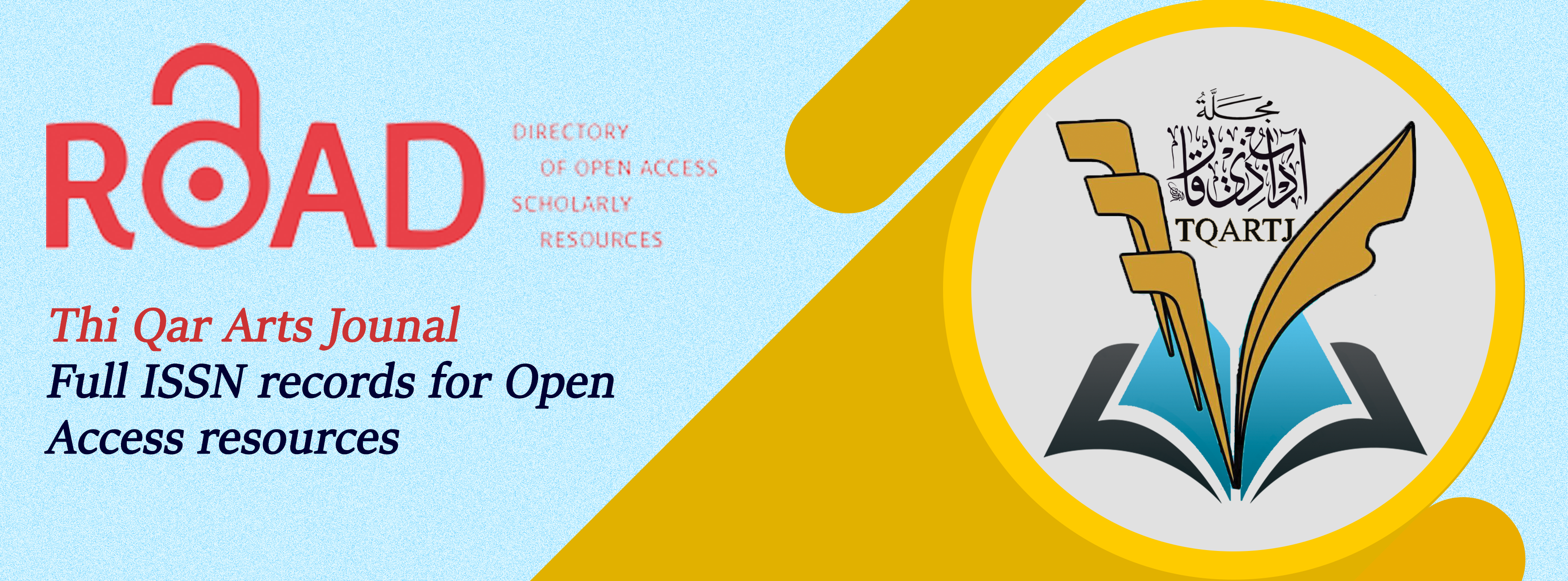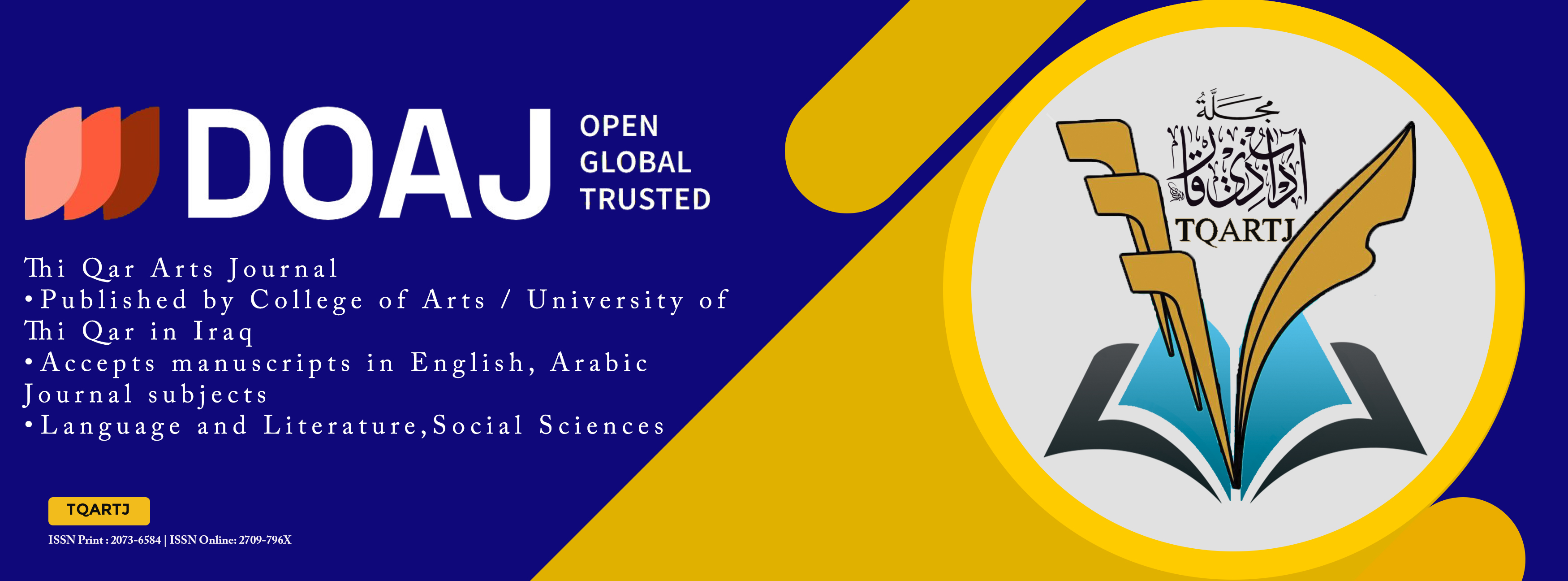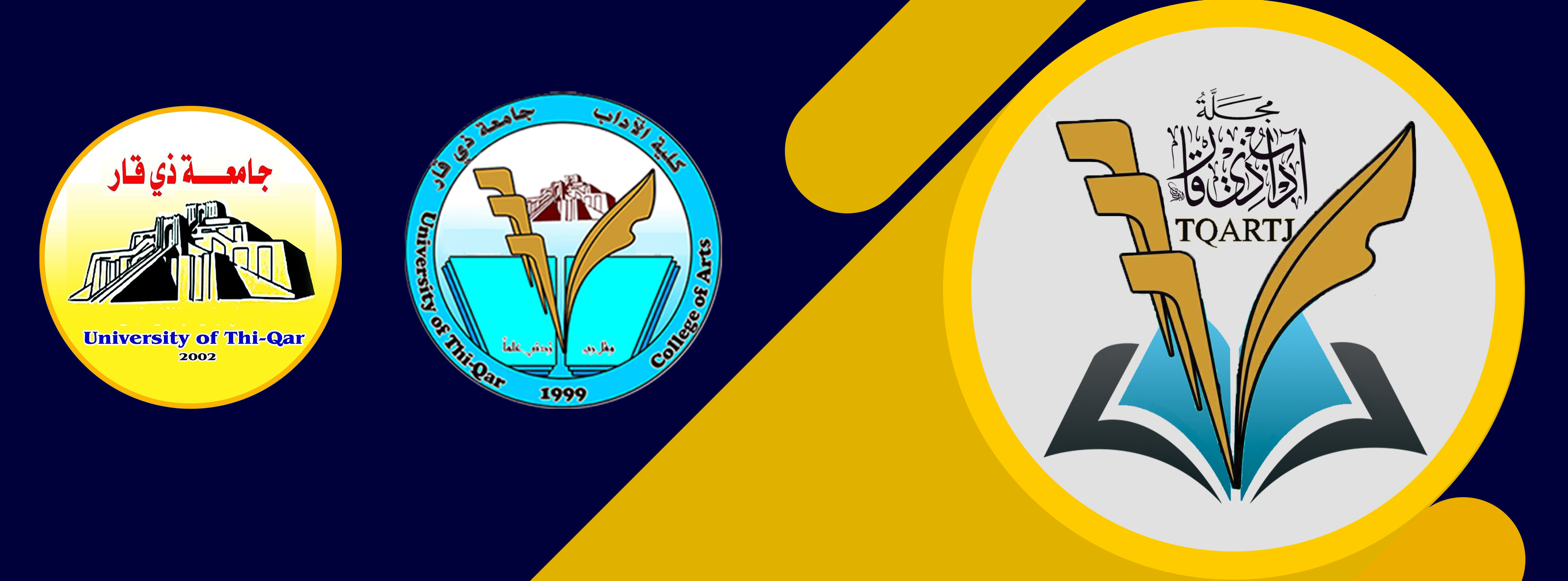Arab Muslim Characters in Khadra’s Novel the Sirens of Baghdad
DOI:
https://doi.org/10.32792/tqartj.v1i44.466Keywords:
Orientalism, Arab Muslim, Westerners, post-colonial, othernessAbstract
In this study, the researcher presented the American’s views of Islam and Muslims in Khadra’s Novel The Sirens of Baghdad. The image of Arab Muslim character is portrayed differently by the post-colonial novelists post September attacks 2001 on the World Trade Centre towers situated in New York City, USA. Since the accident, many American writers who represent the Western values have endeavored to stigmatize the picture of Arab Muslims through their writings using variant depictions to confirm their ‘Others’ as they consider the Arab Muslims their foes in the world. Consequently, the American writers perpetuate their previous negative picture to continue their domination upon the Arab Muslims, using post-colonial concepts in their portrayal. In contrast, the Arab writers try their best to depict the image of the Arab Muslim characters fairly as they have realistically witnessed and experienced the actual life events. Due to this, Orientalism, stereotyping, otherness and racism are the key concepts examined in this study related the Sirens of Baghdad. As many other Western and Arab writers have dealt with the same concepts previously, the current study examined and identified the concepts differently through this study concerning Arab Muslim characters from contrasting perspectives. Accordingly, the researcher adapted Said’s Orientalism theory as a main method of analysis. The research findings revealed that the American novelists purposely reflected dark aspects of the Arab Muslim characters so as to show to the world that Islam is a religion that propagates oppression and violence. On the other hand, the Arab novelists successfully and realistically proved that it is the Westerners who most of the time oppress the Arab Muslims and murder a fairly good number of them on the basis of false and unfounded allegations. As a conclusion, the study proposes a framework of the portrayal of the Arab Muslim characters conceptualized by the post-colonial perspective. It is recommended that future research examines the reliability and authentication of the respective American novels that have distorted the Arab Muslim identity by using high level of fictitious representations that is very distant from reality and truth, so that the negative representations of the Arab Muslim characters can righteously be repudiated. Moreover, future research can explore cross-cultural studies related to the novel concerned and the like of them so as to highlight the psychological, cultural and societal representations of the two nations—the Arab and
the Western.
Downloads
References
Ahmed, S. & Matthes, J. (2017). Media Representation of Muslims and Islam from 2000 to 2015: A Metaanalysis, International Communication Gazette, 79, (3), 219–244.
Aldukhina, I. A. A. (2015). The Representation of Islam and Muslims in Don DeLillo’s Falling Man. Al-Nasser University. Vol, 1 No.1, 1-14. Available at › wp content › uploads › download-manager-files › the ...access on the 19th of October, 2019.
Alireza, A., &Khademi, A. (2015). Representation of Islam in Post 9/11 English Novels. Research Journal of Language, Literature and Humanities, 2(8), 1-13.
Alosman, M. I. M., Raihanah, M. M., &Hashim, R. S. (2018). Differentiation and Imperfectionality in John Updike’s Terrorist. 3L: Language, Linguistics, Liter Alosman M. Ikbal M. et. al., (2019). “Architected Enemies in Don DeLillo’s Falling Man.” GJAT | JULY 2019 | VOLUME 9 ISSUE 1 | 23 ISSN : 2232-0474 | E-ISSN : 2232-0482 www.gjat.my.
Bhabha, H. (1994). The location of culture" London in New York: Routledge.
Bouhassoun, A. (2016.). “Terrorism and Literature: The Case of Yasmina Khadra’s The Sirens of Baghdad.” file:///C:/Users/abdular/Desktop/The%20sirens%20of% 20baghdad
Fanon, F. (1967). Black Skin, White Masks, . tr. by Charles Lam Markmann. New York: Grove Press.
Leitch, Vincent B. The Norton Anthology of Theory and Criticism. New York, London: W. W. Norton& company, Second Edition, 2010.
McLeod, John. ( 2000) Beginning post -colonialism. Manchester: Manchester University press,
Mohamad, L. (2015). Burden of valour: the hero and the terrorist-villain in post-9/11 popular fiction.
Multiworld, N. (2003). Textbooks as Missiles. Kamiriithu: The Multiworld Newsletter
Nydell, M.K., 2018. Understanding Arabs: A guide for modern times. Hachette UK. Visualisation when implementing a new technology (Master's thesis, University Twente).
Rane, H. (2010). "Islam and Contemporary Civilisation: Evolvign Ideas." Transforming Relations (Carlton: Melbourne University Press, 2010): 75-99.
Said, E. W. (1978). Orientalism. London: Routledge & Kegan Paul Ltd
Smith, C. (2013). Anti-Islamic Sentiment and Media Framing during the 9/11 Decade, Journal of Religion & Society, 15, 1-15.
Stam, R. (2017). Film theory: an introduction. John Wiley & Sons.
Van Dijk. T. (1989). News as Discourse. New York: Lawrence Erlbaum.
Van Dijk, T. (1998). Ideology and discourse A Multidisciplinary Introduction. Barcelona: Pompeu Fabra University.
Van Dijk (1993). Discourse and Manipulation‖. Journal of Discourse & Society, 17 (3), Pp.360-361
Young, R. J. (2001). Post-colonialism: An Historical Introduction. Oxford: Blackwell.
Downloads
Published
Issue
Section
License
Copyright (c) 2023 Dr. Ali Dakhil Naem Naem

This work is licensed under a Creative Commons Attribution 4.0 International License.
The journal applies the license of CC BY (a Creative Commons Attribution International license). This license allows authors to keep ownership of the copyright of their papers. But this license permits any user to download, print out, extract, reuse, archive, and distribute the article, so long as appropriate credit is given to the authors and the source of the work. The license ensures that the article will be available as widely as possible and that the article can be included in any scientific archive.



















